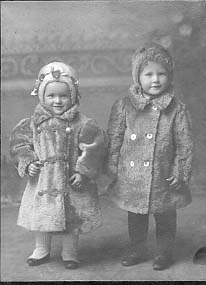taken based on the clothing. (The funniest guess was the 1970's.) It was taken in Colorado in 1908.

We discussed why this was considered a primary source and how it could be used for research. They had a blast trying to figure out information from the clues in the photograph. Next we watched a film clip by Thomas Edison from 1914, Buster's Dog to the Rescue, which the students loved. Other primary documents that would be great when researching were church records, cemetery records, war records, diaries, journals, photographs, film, art, and sound recordings. The conversation quickly turned to how we could use these various sources. The example used was this photograph from the Library of Congress digital archives http://www.loc.gov/pictures/collection/csas/item/csas200802661/

The students had recently visited Old Salem on a field trip and had to complete a project on what they learned. This photo of the Chimney House in Old Salem would be a great addition to complement their project as it also provides the photographer's name, date of photograph, and historical information on the house itself (built in 1789).
Of all the many aspects of librarianship that make up the job that I do, research is my absolute favorite. Seeing sparks ignite in students when connections are made to reality is very powerful. When we can read a fiction book, such as Wonderstruck by Brian Selznick and it creates that desire to find out more on a particular subject or place, such as the American Museum of Natural History, I want to be there for their journey. Using primary resources helps that journey to become real to them. To make it easier for students and teachers to access online primary resources, I have compiled a Symbaloo page full of primary sources links. Sharing some Symbaloo ♥: Primary Sources Webmix http://edu.symbaloo.com/home/mix/13ePQJMDMZ. I will post Part 2 of our lesson, which includes our creation aspect using primary sources after we have completed it. Have fun sleuthing!